Food Trucks Are Here To Stay
They’ve been around for years and there’s no end in sight. Serving as an integral part of the overall mobile food movement, food trucks (mobile vehicles where food and beverage is cooked and sold), are more alive than ever before. With 62% of consumers seeking out new/unique dining experiences and nearly 80% of people willing to try a new food or beverage once—it may be a better time than ever if you’re a business or chef looking to offer an experimental, labor light, social media rich experience to grow your brand. And gone are the days when the end game for a food truck was to land a brick and mortar presence on the side of a busy, hungry street. While still a worthy pursuit, today’s food trucks are leaning into growing consumer appetites for new dining experiences by serving up innovative ways to keep their trucks more relevant than ever. Moving beyond the role of feeding crowds of fair-goers and office workers—we highlight 3 food trucks that embrace all a food truck can be in 2019. But first, let’s dive into the data behind where the industry is headed.
WHAT’S HAPPENING
- Food trucks reached an estimated $2.7 billion in revenue in 2017, a 24-percent increase from 2014.
Source: According to a December 2017 report produced by Food Truck Nation under the U.S. Chamber of Commerce Foundation - Food truck industry revenues have grown 7.3 percent at an annualized rate from 2012 to 2017.
Source: IBISWorld
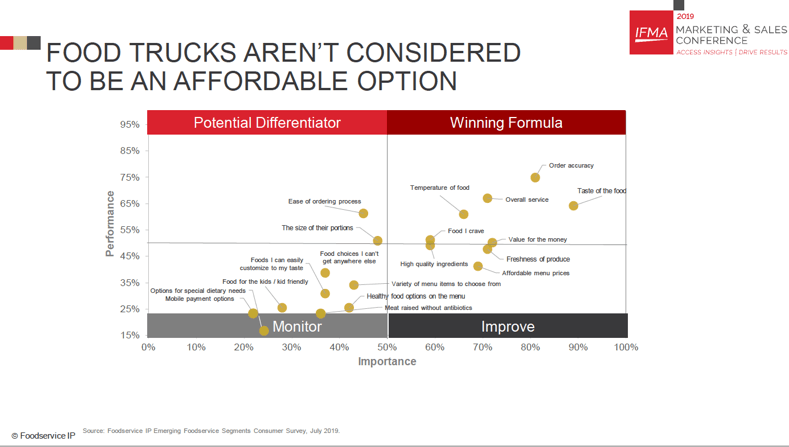
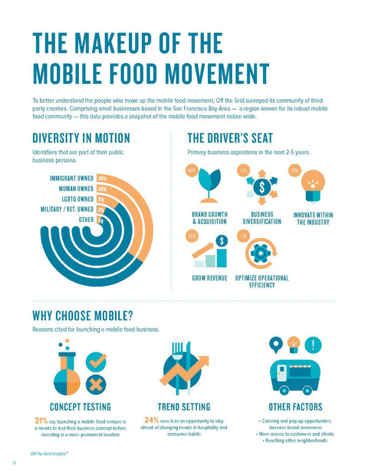
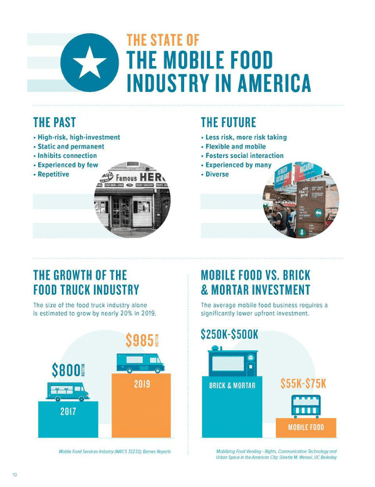
Food Truck Showcase
Farmers and Foragers
Bringing more awareness to your plate.
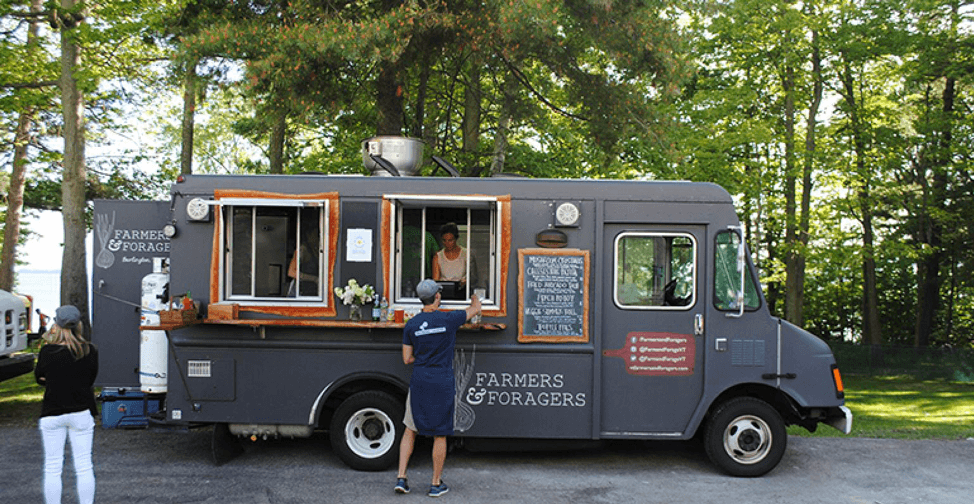
Once upon a time, a food truck was known as a one-stop indulgent spot, where you may have thought little about where the food came from. You just wanted it to taste really good and be on your way, right? (It’s OK if that’s still the case, too). Founded in 2014, Burlington, Vt.-based Farmers and Foragers brought a new perspective to the table, literally. Partnering with local farms to source the ingredients for a diverse menu of American comfort food—form Goi Ga, a Vietnamese Chicken Salad to Duck Wontons and Crispy Squash Blossoms. Some of the menu even features foraged produce from Vermont’s very own backyard. “When you go to a food truck rally, everything tastes amazing, but you don’t know where the food comes from,” he said. “I think we brought some level of consciousness to that.” This truck proves the care and quality you may typically expect only in a restaurant can be embraced by food on the move as well.
Hot Indian
Building a better, brighter brand.
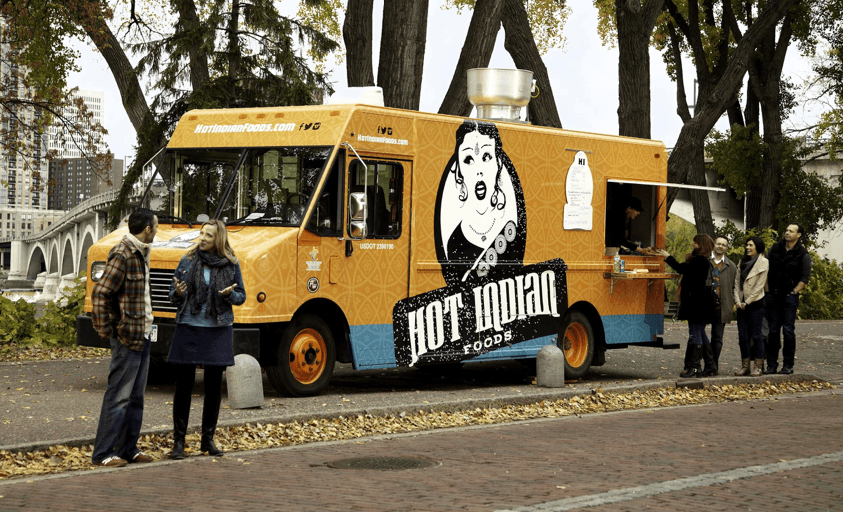
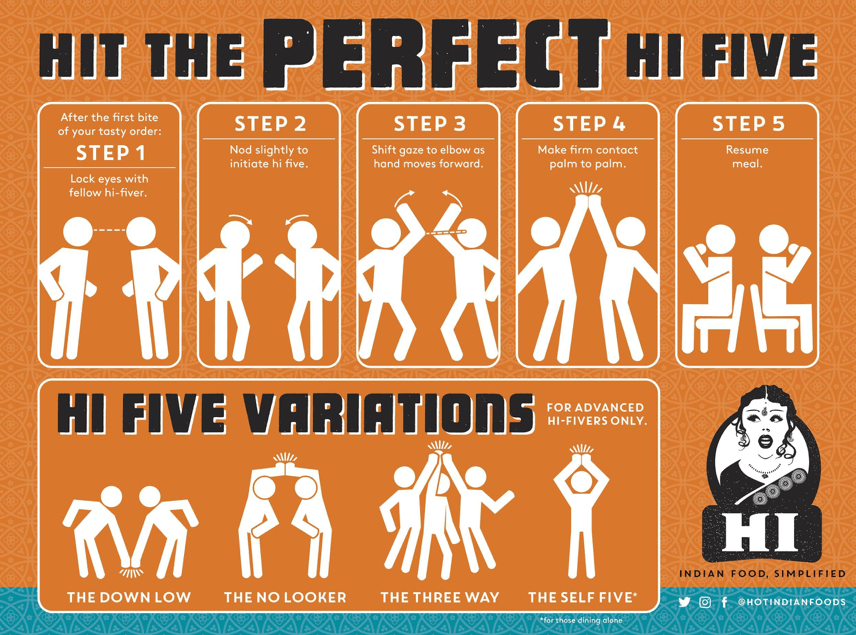
Founded in 2013, this brightly hued, highly Instagrammable food truck (and now in multiple brick and mortar locations across the Twin Cities including a residence at Midtown Global Market), Hot Indian plays a role in changing the dining experience by providing memorable branding moments at every touch point — enticing consumers to enjoy more than just delicious food like their famous Indurrito: An Indian burrito made with house made roti, a round Indian flatbread. From showing consumers how to give a proper high five to big, bold graphics, Hot Indian has proven its sustainability in the mobile food space by embracing a truly Instagrammable, shareable experience.
Finnegan’s Reverse Food Truck
No food served here.
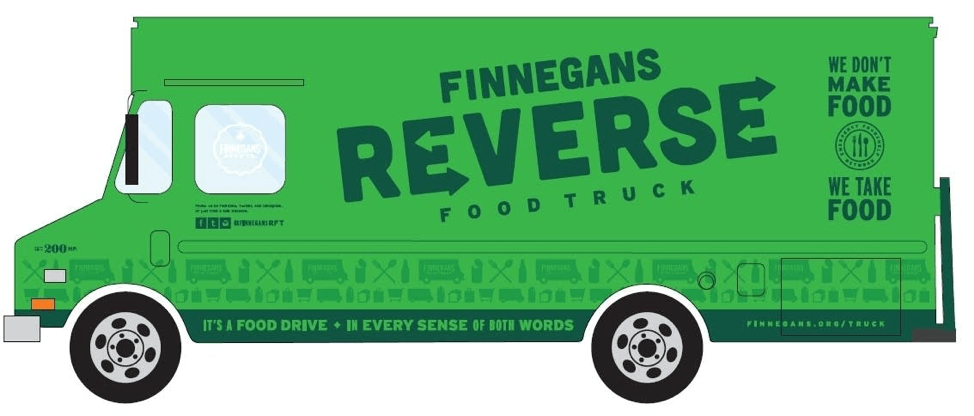
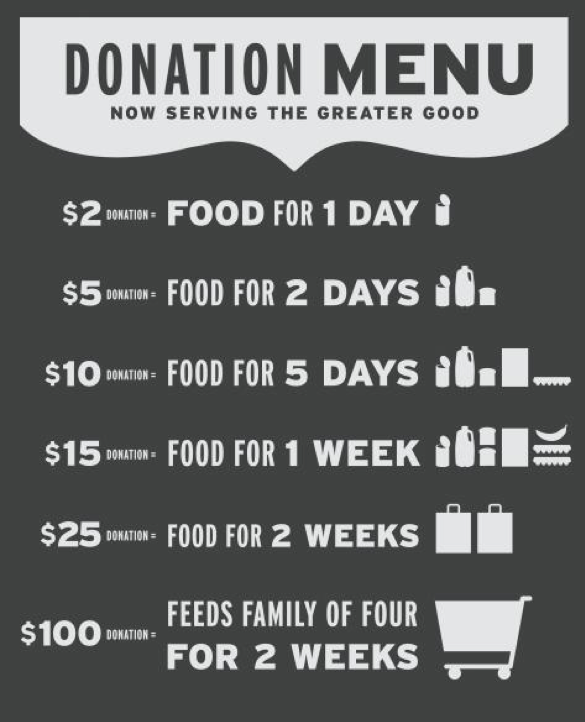
It may look like an ordinary food truck, but there’s no food served here. The (501(c)3) Minnesota-based brewery Finnegan’s Brewery has been doing good by its community since day one, with 100% of its profits going directly back to serving areas in need. So in true local-oriented fashion, their Reverse Food Truck (RFT) follows suit. Launched with one simple mission—We Don’t Make Food. We Take Food—The donation-based menu positions it as an innovative twist on the classic truck that’s in the business of cooking and serving up food. Through a partnership with The Food Group’s Harvest for the Hungry program, the RFT allows events to activate this giving back program where food is accepted and loaded into the truck to be donated to food shelves in the community. Their website even offers a contact to help others start their own RFT or volunteer with this one. A beautiful blend of entrepreneurship and philanthropy, this mission-based truck stands for a lot more than driving sales.
WHAT’S NEXT?
While there is no single roadmap for mobile food success, it’s clear there is a nearly endless runway for what a food truck can be—and stand for—today. When rooted in a solid business plan and a lens of sustainable thinking — chances of launch, engagement and a shot at longevity are favorable. Regardless of how a truck comes to be, it always starts with a focused business strategy and clear objectives – in order to create a solution that makes sense for your business and the needs of consumers or in many of these cases, an entire entity or community. Through it all, one cannot underestimate the role of a strong brand at every touch point – from your logo, look and feel, voice and tone, website and social efforts, community outreach and beyond. Working with partners that share and foster a holistic view of your brand experience — that is always key to success.
Additional Sources
https://www.forbes.com/sites/lizzysaxe/2018/12/12/want-to-know-the-future-of-food-trucks-in-2019-read-this-report/#34ed11aa398f
finnegans.org/reverse-food-truck
https://www.themplsegotist.com/news/2019/07/30/branding-stands-front-and-center-in-the-modern-dining-experience/
https://www.restaurant-hospitality.com/food-trends/farm-wheel
